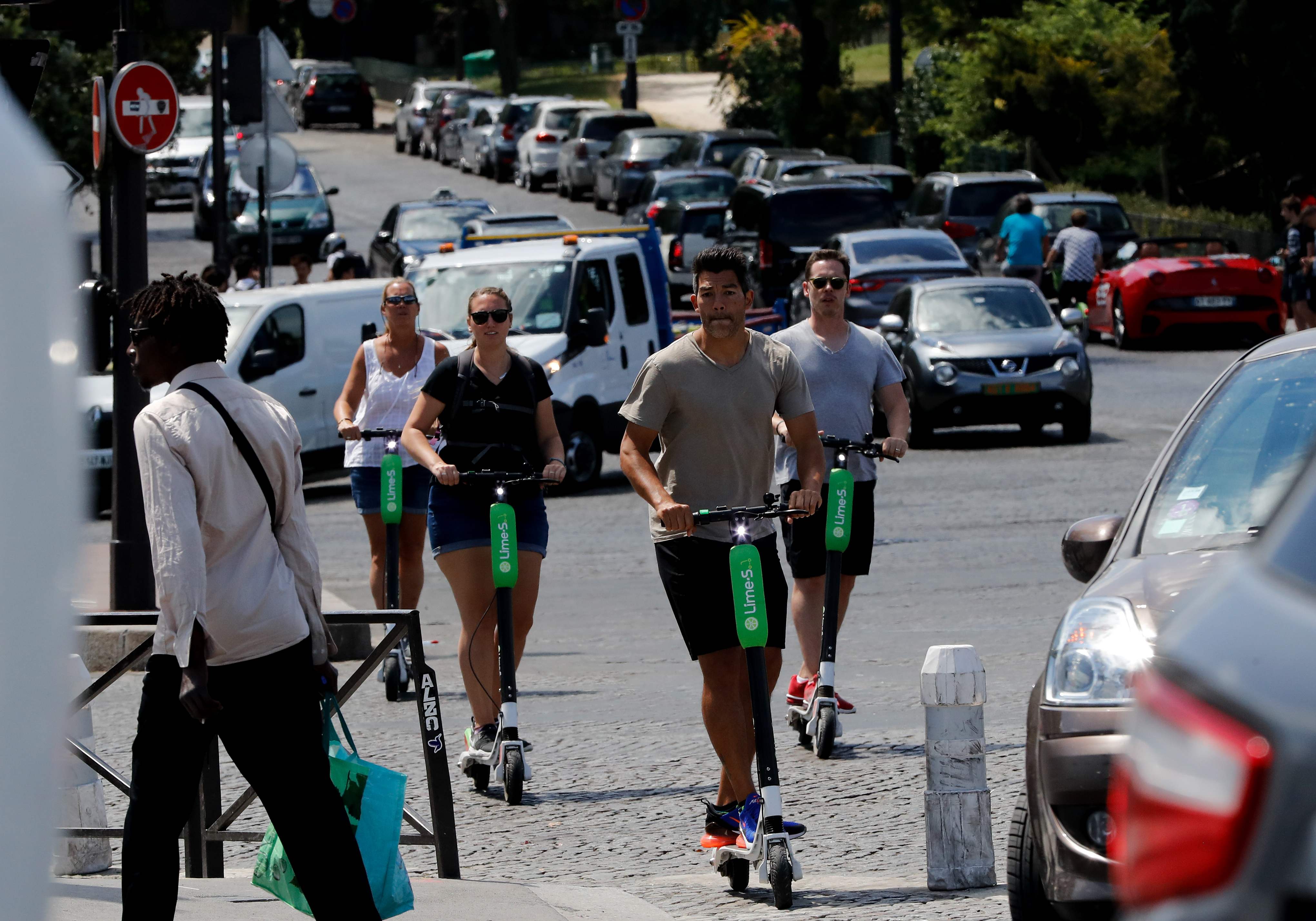 The sidewalks were littered with scooters. Not the Razor scooters my kids played with, but scooters with motors. “What are these things?” I asked the friend I had met up with close to where he lives in Venice (California.)
The sidewalks were littered with scooters. Not the Razor scooters my kids played with, but scooters with motors. “What are these things?” I asked the friend I had met up with close to where he lives in Venice (California.)
“They’re amazing,” he replied. We ride them all the time. Better, cheaper and faster than an Uber.”
This was my introduction to the Scooter phenomenon over a year ago, which soon deepened when a team of my USC graduate students chose the Bird brand of scooters for their semester-long project.
My first reaction, in the classic, grouchy old-man style, was essentially, “Get off my lawn.” My knee-jerk prediction, that these things will be illegal in less than a year, was strongly supported by personal experience. I have nearly run over several scooter riders careening through stop signs and red lights with no regard to traffic laws or their own personal safety. Many riders seem to be more than a little under the influence as the evening grows late.
There will be blood. This seems to be supported by data, which I feel intuitively is extremely underreported. CNET reported two deaths by scooter last year, along with what they estimate to be over 1,000 emergency room visits a month. These numbers will only grow as scooters expand to new markets and penetration in existing markets increases.
I’m not getting on one of those things. I can’t. I was conditioned to be risk averse at birth. When I was a kid, my mom wouldn’t let me ride roller coasters because they were “too dangerous.” Thrill seeking for me is going outside with wet hair when it’s cold out or drinking Espresso in the afternoon. I was a semi-serious cyclist at one time (NOT a motorcycle, which would be crossing the line!) and I know how poorly people drive. I had the road burn to prove it.
As exposed as a cyclist is, I felt that I had some degree of control. A scooter feels like it offers no control and no protection. Who’s going to schlep a helmet around with them? You’re totally vulnerable.
Okay, I’m not the target, demographically or psychographically. Still, two major challenges stand out for this category, infrastructure and branding.
The excellent final presentation by my grad students demonstrated how inter-related these issues are, and how difficult they will be to solve.
Dedicated scooter paths, clear rules of the road, codified into law, and rigorous enforcement of those laws would minimize deaths and injuries. That’s not going to happen. We don’t even have enough bike lanes. Most municipalities are starved for funds. Reconfiguring traffic, creating dedicated lanes and the like are a reach.
The only possible way around this might be the Domino’s Pizza approach. You may recall that Domino’s launched a campaign last year offering to repair potholes. Brilliant and scary at the same time. A stroke of marketing genius for Domino’s, but I, for one, am deeply troubled by any reliance on the private sector for essential public services.
Despite the billion-dollar valuations of some scooter companies, I doubt that this scale of infrastructure spending is in their budgets. Though limited investment through public/private partnerships could help in forward-looking, Portland-like cities.
“Scooter Lanes by Bird” would, to at least a limited extent, contribute to overall goodwill and branding. Though I might be just as happy to ride my Lime in the Bird lane if it’s more convenient for me.
When my students started talking to me about Bird, I kept saying, “Wow, I wouldn’t want to be in their shoes.” Here’s a market where the product and service offerings are basically identical. Brand choice? “I’ll take whatever is lying on the street closest to where I am right now.”
It’s all about access. That’s why the scooter companies have rushed to align themselves with Uber and Lyft. Still, proximity will rule.
There were some interesting recommendations offered by my grad students in their final presentation. I particularly appreciated a rewards program that was both carrot and stick. It encouraged good behavior by awarding additional points for dropping scooters off at designated locations and penalties (points deducted) for not doing so.
Still, not enough.
I would think that the only way to break through here would be along the lines of standing for and investing in civic and environmental concerns in a big, visible way. Who can best stand for the future of transportation? For civic pride? For a cleaner environment?
It won’t be easy and it won’t be cheap.



